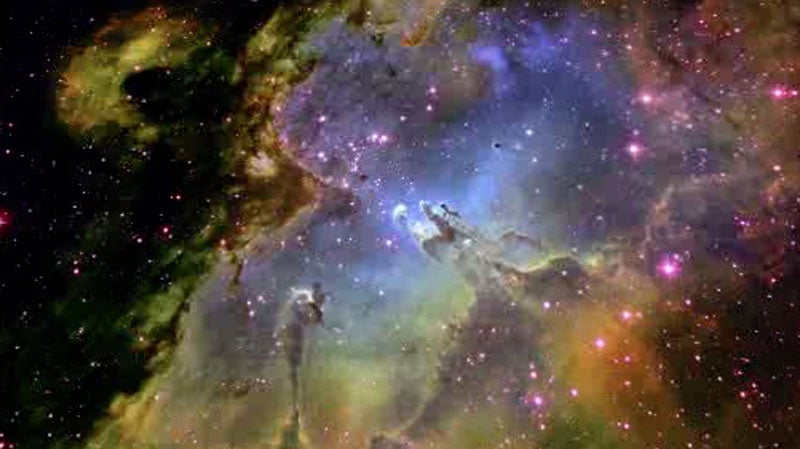The Trapezium’s four stars may be the most conspicuous members of the cluster forming out of this vast cloud of gas and dust, but they represent just the tip of the star-formation iceberg. Astronomers expect the nebula has or will create several thousand stars over the next few million years. Some of these stars no doubt will look a lot like the Sun. And that’s appropriate because the Orion Nebula appears to be the best analog to the Sun’s birth environment within 6,500 light-years of Earth — our star and its planetary system likely formed from a nebular complex that contained between 1,000 and 10,000 stars. As the Sun condensed from a pocket of gas and dust slightly denser than the nebula’s average, a disk of leftover material surrounded our fledgling star. Countless collisions within this disk built the planets and smaller bodies over a roughly 10-million-year period.
NASA’s Goddard Space Flight Center in Greenbelt, Maryland, created this video to show the star- and planet-formation process within a dense nebula. The video starts with a flythrough of a glowing nebula and continues to a close-up look at a nascent star and its protoplanetary disk. The animation ends with a few large planets taking shape within this disk. NASA expects to get much better views of the entire process from cold cloud to planet birth after the James Webb Space Telescope launches later this decade.










